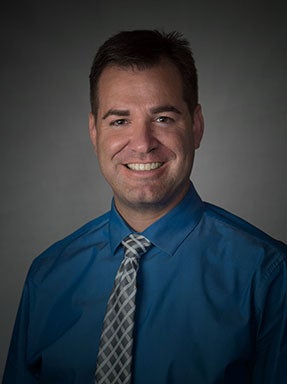Making a Difference in Denver Communities
DU’s Bridge Project aims to help kids in Denver’s public housing neighborhoods
Growing up, it’s important for children to have a mentor and support system in place to be a positive influence on their life. For some kids it might be a parent, a teacher, or even a coach. However, for many kids in Denver’s public housing neighborhoods, their support is coming from the Bridge Project.
“It’s like having another family that knows you and wants to see you succeed,” says 14-year-old Elvis Daboni, who has been going to the Bridge Project since he was 7 years old.
The Bridge Project is a community outreach initiative of the Graduate School of Social Work (GSSW) at the University of Denver. The program started in 1991 as a path for youth in Denver’s public housing neighborhoods to graduate from high school and go on to attend college or choose a vocation.
“The Bridge Project actually represents all four of the strategic directions outlined in DU IMPACT 2025,” says Amanda Moore McBride, dean of GSSW. “For 26 years we have had a private-public partnership with the Denver Housing Authority to implement an evidence-based practice that transforms lives in public housing.”
Research shows the success this program is having in the Denver community. Math, science and reading test scores for Bridge Project students is higher than the average for Denver Public Schools. But perhaps the most significant proof point is that in 2016, 100 percent of Bridge’s high school seniors graduated, compared to 65 percent of all high school seniors in Denver Public Schools.
“There are lots of youth development organizations, but very few can say what ours can: We change lives,” says McBride. “The Bridge Project is the only youth development organization connected to a school of social work in the country.”
The Bridge Project operates four different locations across Denver and serves about 600 students. Each site provides an afterschool program with tutoring and help with homework. It also offers summer programs that gives kids the chance to participate in daily literacy activities, outdoor education programs and a technology academy.
Megan Miccio (MSW ’11) is the program’s Youth Voice Coordinator. She started working with the Bridge Project seven years ago as an intern during her final year at GSSW.
“Bridge has such a diverse group of students, and being an intern here was really fulfilling,” Miccio says. “No two days were the same. It was fun to be able to work with kindergartners [one day] and the next day work with high schoolers. The opportunity to work with the different age span is something that really drew me to work with the students, and now having been here seven years, I’ve really seen some students grow up here.”
One of those students is Daboni, whom Miccio first met the day he walked in as a second-grader. Daboni’s parents started sending him to Bridge because instead of doing his homework after school, he would watch TV. Now, seven years later, he is preparing to go to Denver School of the Arts for high school.
“Working with [Elvis] as a second-grader, going through elementary school, middle school and now seeing him go into high school, he is a natural leader,” Miccio says. “Whenever we do things outside of the Bridge Project, I can always count on Elvis to be able to speak about Bridge, because for him it is really easy. He can just talk about his experience and what it has been like.”
Seeing students like Daboni succeed serves as an inspiration to Miccio and drives her to continue working every day with kids in Denver’s public housing neighborhoods.
“It’s so rewarding at the end of the school year when you see our seniors graduate, or you see those middle schoolers moving up to high school,” Miccio says. “It’s also really exciting when we see students graduate from high school or college and then they come back to Bridge and volunteer or tutor one of the younger students. It’s really nice seeing them stay connected with their community and staying connected with something that was a huge support for them.”










